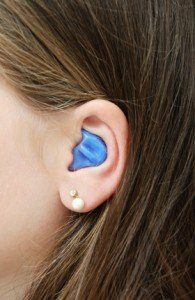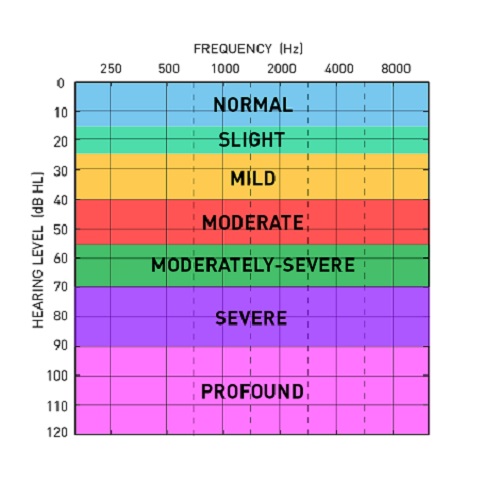What to expect from your hearing test
After seeing several recent articles and social media posts promoting good ear health, I realised that I was long overdue for a hearing test so promptly booked myself in with an audiologist to get a check-up at my local Specsavers hearing centre. The NHS covers hearing tests here in the UK, and so they are funded and available to all who require them. Whilst I am eternally grateful we have this service, I found the process of the test rather unpleasant, baffling in its design, and felt it left me with more questions to research myself than it had answered.
The Hearing Test
The exam started with a series of questions regarding medical history, hearing concerns, work, and lifestyle. I told the audiologist my concerns and was met with a weird scoff and strained line of subsequent questions when I answered my profession, making it an uncomfortable start. Maybe she was having a bad day, or had found musicians and engineers to make difficult patients? I can only wonder. Next, a photograph was taken inside each of my ears, which is called an otoscopy, and then the photos were brought up onto a computer screen to show the ear canal. Once those were out the way with no problems, the headphones went on in the soundproof booth, and the hearing test started.
Pure tone audiometry (PTA) is a test that measures the hearing threshold. Pure tones are played in each ear, and the responses are measured – in this case, by pushing a button each time I could hear a sound. The test starts with one ear: a frequency is played loudly, and then the same frequency is played slightly softer, again and softer again several times. This is then repeated in the same ear with the next tone. PTA measures audibility thresholds and has a “normal” average range but does not identify all hearing loss, and therefore some question its accuracy. The average levels refer to the average of hearing threshold levels of the tones used in the test, which are typically 500, 1000, 2000 and 4000 Hz. Headphones are changed during the test from being on the ear as you would normally wear them, to a different set which is placed slightly behind the ear onto the bone of the skull. The process is repeated on the other ear, with the click response being the only interaction from the patient to the audiologist during the test.
Questions arising from the test
The strange thing to me about this method is the lack of the element of surprise – the interval time between the diminishing volume tones was quite rhythmic and predictable, creating absurd existential doubt over the tones reality versus expectation. I had gone in with no real memory of my last hearing test and had thought it would be more similar to an eye exam in the way that new pictures and letters are introduced to the eyes for the first time with no way of cheating your way through, and there’s a continuous back and forth interaction with the optometrist. The lack of interaction meant that there was no opportunity to discuss whether there was a different experience in each ear or anything else that might have cropped up during the test. It seemed quite odd not to have any dialogue, and the decision not to randomise the tones in frequency, volume, and ear was the thing that surprised me, rightly or wrongly.
I was brought out of the booth and greeted with fine results, but unfortunately, it was not the cause to celebrate you’d imagine; I was told that my concerns raised back at the very beginning of the test were either:
- not real and were in my head, or
- due to a brain problem.
The audiologist explained to me that her role only studies the signals as far as the ear and that the signals to the brain from the ear are the jurisdiction of another doctor. The test was over, and I wondered how older or more confused patients might be dealt with at this point. 
What to do if you are facing hearing loss
Hearing impairment is defined by the World Health Organization (WHO) as a hearing loss with thresholds higher than 25db in one or both ears. Loss at this level at one or more of the previously mentioned frequencies in the PTA test can guide an audiologist to the specific diagnosis and treatment.
If you’re curious to get tested but are unable to arrange an exam in person, there are various online sources with recreations of PTA tests you can do to discover if you are in the “normal” range or have any areas of concern you’d like to understand better. As with most things, though, prevention is better than the cure and looking after your hearing should be a priority. While I’m not working with stadium rock levels of loudness every night, safety measures are so crucial for those working in potentially damaging environments.
 Moulded earplugs and IEMs are a big but worthy investment for both prevention and treatment to stop further damage occurring. Whilst I’m not affiliated with any companies myself, I have peers who collaborate with businesses who provide IEMs and earplugs to them in the way of sponsorship deals, which can be a great and mutually beneficial way to help with the cost of necessary ear protection.
Moulded earplugs and IEMs are a big but worthy investment for both prevention and treatment to stop further damage occurring. Whilst I’m not affiliated with any companies myself, I have peers who collaborate with businesses who provide IEMs and earplugs to them in the way of sponsorship deals, which can be a great and mutually beneficial way to help with the cost of necessary ear protection.
Since my hearing test, I’ve been pleasantly surprised in my research to find there are rolling schemes in the UK such as the Musicians’ Hearing Health Scheme which provides access to specialist hearing assessment and bespoke hearing protection, partnership with Help Musicians UK and Musicians Hearing Services. These tests are with musician-specialist audiologists and include regular check-ups and bespoke hearing protection, all at a massively subsidised rate, making hearing health and treatment both accessible and affordable.
Final thoughts
In the last few weeks, I’ve learned that PTA is possibly not the most suitable or in-depth method for testing musicians’ hearing, although it gives a good benchmark to pinpoint severe hearing loss. I’ll definitely be visiting a musician-specialist for my next appointment, for the bedside manner as well as the knowledge. In matters of health, I do sometimes worry that complacency is encouraged, and if possible, my advice would be to visit a specialist and get a second opinion if something feels ‘off.’ There are experts, sponsorships, and schemes actively working to help look after musicians and engineers, and I for one am comforted knowing they’re out there taking musicians’ health seriously.
To find out more about getting specialised hearing assistance in the UK, including tests and ear protection visit:
In the United States visit
